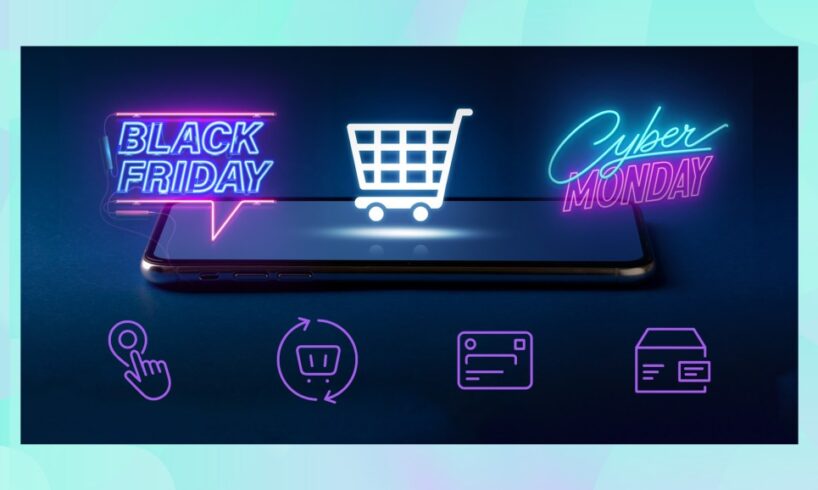
Let’s be honest, the groundwork for Black Friday and Cyber Monday (BFCM) started during the first promo you held this year. At that point, you trained your customers to expect a discount, and every subsequent offer has continued to do that.
Related Article Block Placeholder
Article ID: 284433
Amongst tough trading conditions, it’s easy to fall into the habit. We get hooked on the revenue acceleration that comes from discounting, and we need it to cover the missed revenue targets of BAU (business as usual) periods.
What I always point out is that these events are not unrelated. Our BAU periods become harder to trade in because of the aforementioned discounting expectation customers now have. And BFCM is the time of year when they have the loftiest expectations of all, so let’s get it right and start you back on a pathway to full price BAU trading for the majority of the year.
In 2024, Black Friday alone generated $10.8 billion in revenue, up from $9.8 billion in 2023. Cyber Monday saw a similar increase as consumers spent $13.3 billion in 2024, up from $12.4 billion in 2023. And with the right prep and a focus on profitability, SMEs can make this period their most powerful growth lever of the year, allowing their full price trade to soar.
Here’s how.
Smarter business news. Straight to your inbox.
For startup founders, small businesses and leaders. Build sharper instincts and better strategy by learning from Australia’s smartest business minds. Sign up for free.
By continuing, you agree to our Terms & Conditions and Privacy Policy.
Lesson 1: Focus on the right numbers
Too many brands head into BFCM chasing revenue rather than return. The result? A sales spike that looks great on paper but leaves you nursing thinner margins and bigger fulfilment bills.
Before you set a single offer live, define your guardrails:
What’s the lowest discount you can offer while maintaining a healthy contribution margin?
What’s your breakeven CAC (customer acquisition cost)?
Which products can carry volume without killing profit?
Pull last year’s BFCM data: which products flew out the door, which got returned, which customers spent the most? Which came back and shopped again?
Track metrics like average order value (AOV), conversion rate, and gross profit per sale, daily. If you can’t measure these easily, fix your analytics before you fix your campaign.
Related Article Block Placeholder
Article ID: 324410
Lesson 2: Keep things simple
Contrary to popular opinion, I like to do less over the BFCM period. A lot of brands get caught up in complicated, staggered offers and gifts with purchase on top of the baseline sale, which don’t add a lot of incremental revenue.
What they do is cost your team hundreds of hours worth of time they need for planning what post-BFCM looks like. You know that time period when sales are harder than ever to come by? Then.
Lesson 3: Details matter
You’d be surprised how many small businesses forget this part.
Run a load test. Check every page. Simplify your checkout. Auto-apply discount codes instead of making customers chase them. Mobile-first is non-negotiable in 2025, so train the team to think like this rather than in large, landscape desktop files.
And while you’re at it, double-check your shipping logic, returns policy, and customer support coverage. A slow response during BFCM can lose you not just a customer, but their next five friends.
Lesson 4: Warm up your audience, a little
By mid-October, most consumers have already started mentally sorting their BFCM shopping lists. If you’re waiting until November to start promoting, you’re too late, or so they say.
The timing of when to announce BFCM is controversial. Too early and you risk losing sales that would have converted at full price. Too late, and your pipeline isn’t big enough to drive the revenue you’re seeking.
A good way to consider things is retention versus acquisition.
For current customers, tease your offers via email and SMS close to the sale. They know you, and by all accounts, they like you. They don’t need weeks to decide.
For new, cold audiences, use lead gen campaigns and “coming soon” language with a clear call to action to join your database to build anticipation four to six weeks out from the sale. Reward your new list subscribers with early access to the sale and content-rich experiences.
If you have influencers or affiliates, brief them early. Their audiences need time to warm up too.
Lesson 5: Plan for everything
The most fundamental staff to have manning the fort now are not your marketing department, it’s:
Operations: Set up a rotating schedule for the entire weekend to ensure there is always someone watching inventory levels, providing updates to your 3PLs, and feeding updates back into the customer service team.
E-commerce: Have dashboards tracking sales, site speed, and ad spend in real time. If you’re selling out early, increase price breaks or push customers to higher-margin alternatives.
Customer service: Respond to every query, email, or comment on social in real time. If you trade globally, you need a 24×7 rotation of staff to ensure that answers are given in every time zone.
Related Article Block Placeholder
Article ID: 307098
Build a backup plan for every scenario: low sales, high sales, stock delays, system crashes. Because something will go wrong and the team who are working the sale need to be able to execute changes without having to ring you 14 times because you were at brunch.
Lesson 6: Don’t forget customer experience
We’ve all shopped from a BFCM sale that didn’t accurately forecast, leaving us on “read” for months on end with no answers about the arrival date of our purchase. Don’t be that brand.
Don’t oversell, monitor inventory closely, flip to pre-order if you’re running low on stock, and maintain timely and clear communication with your customers. When the dust settles, customers won’t remember your sale; they’ll remember how easy it was to buy from you.
Make sure your fulfillment team is resourced and trained, your returns policy is clear, and your communication is proactive. A good experience in November can turn a discount buyer into a loyal customer by Christmas.
Lesson 7: Content matters
The most profitable brands know BFCM isn’t an endpoint; it’s a starting point for relationship building. Having your channels – from website to social to EDM – all firing with content customers can’t ignore is how you build further intrigue and consideration of your brand in non-promo periods.
Time a great product launch for early December to drive reengagement, and if you can’t do that, plan a content campaign focused on shareability and reach.
Then do a full post-mortem: which offers performed best? Which channels converted most efficiently? Which customers bought twice? Lock these insights away for next year.
BFCM isn’t just about competing on price. For SMEs, it’s about competing on clarity, creativity, and credibility.
If you build a plan that’s not just about revenue over the BFCM period, but about finding and engaging loyal customers beyond that, you’ll find yourself on much more solid footing for 2026.





